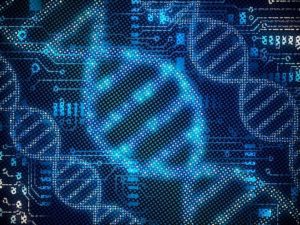Home / How Understanding Epigenetics Can Save Your Life
How Understanding Epigenetics Can Save Your Life
16 Feb. 2016

Dr. Ben Lynch
Original → HERE
We at ‘Fluoridation Australia’ thank you for this post- simple and sensible.

What is Epigenetics and Epigenomics?
Epigenomics is the study of the complete set of epigenetic (chemical) modifications on the genome that can modify DNA instructions, turning on and off genes, or control the production of proteins.
These modifications occur when chemical compounds or proteins bind to DNA and “mark” the genome. They do not alter the sequence itself.
Methods for marking the genome include DNA methylation and histone modification. DNA methylation shows up in promoters and typically shut off genes, and histone modifications turn genes off and on.
Why is Methylation Important?
DNA methylation is associated with many diseases including asthma, aging and cancer, and is influenced by factors like nutrition and exercise. DNA methylation pattern changes with age, and can be modified to slow down aging. Nutrition is one of the greatest ways to do this.
In the bee kingdom, how does a queen bee emerge? A queen bee is actually a worker bee that gets royal jelly. This suppresses a DNA methyltransferase and extends life to 5 years vs. 40 days despite the same DNA as the other worker bees.
In mice, the diet can actually change the phenotype. For example, a methyl rich diet by the mom suppresses a yellow coat color in her offspring, associated with the obese and diabetic rats. Mice that were exposed to BPA gave birth to mutated offspring that were at a greater risk for diabetes, obesity, and cancer as adults. Why? Exposure to BPA plastic will convert the mice to an unmethylated pattern, leading to the yellow phenotype instead of the healthy brown phenotype. But when pregnant mice were fed vitamin B12 and folate (methylation), the epigenetic effect of the BPA was counteracted.
In humans, those who were conceived during the dry season or rainy season, had different methylation patterns based on the food available.
In a study of exercise and DNA methylation, DNA methylation was found in 4,919 sites in the leg that was exercised vs. the non-exercised leg showing the positive expression of exercise and methylation, and therefore reducing disease risk.
How Epigenetics Works
The epigenome shapes the physical structure of the genome. It tightly wraps inactive genes, making them unreadable. It relaxes active genes, making them accessible. The DNA code remains fixed for life, but the epigenome remains flexible. Epigenetic tags react to our environment, which is everything outside yourself.
These tags have cellular memory. In other words, these tags are a collection of pages of the book of your life. This story begins at the moment of conception, is shaped in the womb by your mother, and continues throughout life. What your body receives from the outside world through stress, food and environment for example, becomes the epigenetic story and instruction for genetic control of your health. Cancer is just one of a growing number of diseases that are being linked to abnormalities in the epigenome.
7 Factors That Influence Your Epigenome
1. Stress
Stress is the number #1 reason for poor functioning biochemistry and genetic expression. It induces both deficiency and toxicity, and the body cannot heal when chronic stress is present. We are not designed for the modern technological pace of society. Address the sources of stress, and use strategies like being out in nature, yoga, meditation, vacations or more time off, pets, restful weekends, adaptogens, time with friends and lots of laughing.
2. Sleep
Poor sleep patterns have major repercussions on DNA repair, which is in high need during illness. It is when we repair and heal, and when get deep, relaxing sleep for 7-8 hours, our body can regain health.
3. Water
We often overlook just how important clean, mineral water is. When you break down what is in tap water and even most bottled water, you see a wide range of herbicides, heavy metals, fluoride and other toxins. [easyazon_link identifier=”B003XELTTG” locale=”US” tag=”nutrigenom-20″]Reverse osmosis systems[/easyazon_link] while adding trace minerals like [easyazon_link identifier=”B000AMUWLK” locale=”US” tag=”nutrigenom-20″]Concentrace[/easyazon_link] or bottled mineral water like [easyazon_link identifier=”B00MJ18514″ locale=”US” tag=”nutrigenom-20″]Gerolsteiner[/easyazon_link] are very important. It is hard to be well if the water you are drinking all day contains harmful agents.
4. Breathing
Shallow breathing causes hypoxia, which affects the entire immune system. Be conscious of how you hold your body and how you breathe. Relaxing breathing throughout the day delivers oxygen and nutrients to all your tissues.
5. Medications
Many medications cause deficiencies of key vitamins and minerals, and mimic gene mutations by disturbing the pathways. If you must take certain drugs, be sure to supplement with the nutrients being depleted.
6. Diet and Environment
The diet can harm or heal. Due to our chemical environment, we must seek out organic plants and grass-fed animals to reduce our chemical load. Chemicals, food additives and heavy metals are what cause direct damage to our DNA, inducing diseases like cancer.
Choose a real foods diet, which includes plants (organic) and animal foods (grass-fed, pastured) while avoiding wheat, commercial dairy, sugar, non-organic coffee and limiting alcohol intake. Focus on organic dark greens rich in folate like collard greens, romaine lettuce and parsley. Constipation is always the first thing to resolve if occurring in your body. You can’t get well without daily detoxification.
It is optimal to eat your last meal at 6:00pm, and fast for 12-15 hours until 6:00-8:00am the next morning. This keeps you at a healthy weight while positively influencing the DNA repair mechanisms of the body. Your blood work should look at fasting glucose, HbA1c, homocysteine, triglycerides, SHGB and vitamin D. A Nutrition Genome Report can help confirm where you are most susceptible to deficiencies and toxicities.
7. Exercise
Maintaining a healthy weight and sweating lowers your toxic load. Healthy muscle mass increases oxygen transportation and mitochondria quantity. It is important to exercise moderately but not excessively, which can become inflammatory, especially for those genetically prone to a slow breakdown of serotonin and glutamate. It can be anything from hiking, biking, kayaking, yoga, dancing, gardening or lifting weights. Exercise should be enjoyable, not a chore.
Sources
-
Stanford University Personal Genomics Class
-
Dr. Ben Lynch, SHEICON Conference
-
Reproduced by:








